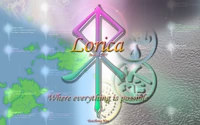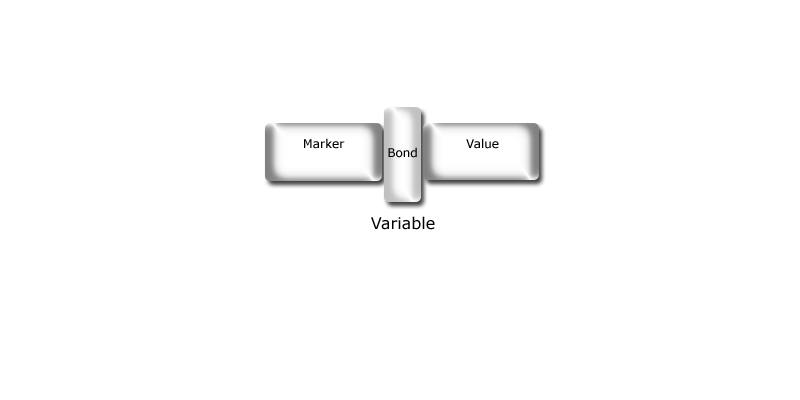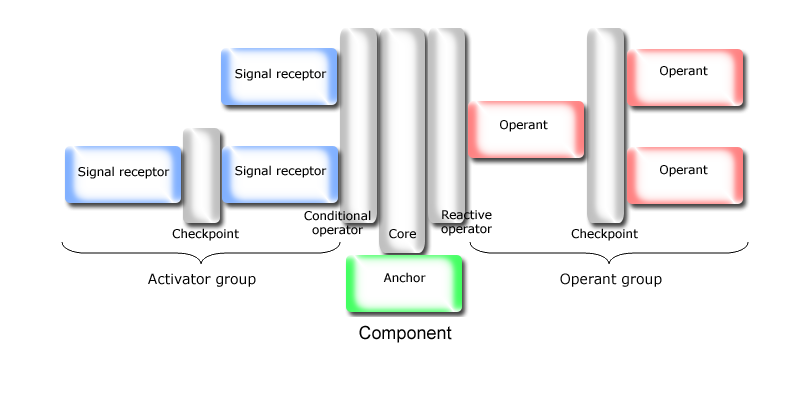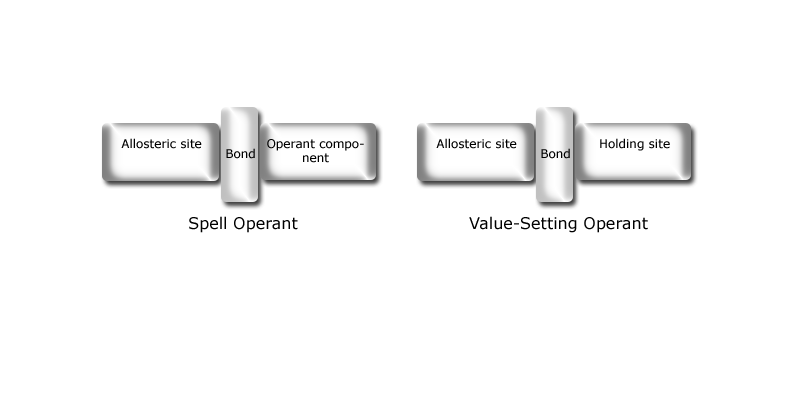|
--Bona al la encycla lorica.
Composition of a Spell[]
A spell is composed of two parts: a passive variable that stores and transfers information and an active component that does the actual spellwork. Both are composed of smaller functional groups which are the smallest unit of activity, and functional groups are in turn composed of stars, the smallest unit of matter in the outside, much smaller even than an atom. All these spell components are spread throughout the domain (reach) of the spell (which is determined by what the spell components are anchored to). Given the small size of a spell component, the spell has a highly homogenous existence within its domain.
Variable[]
A variable is a string of three attached functional groups that moves erratically throughout the domain of the spell. The central component is a bond that holds the other two parts together. There is also the marker that allows other functional groups to identify them and "lock on" if they match. The final component, the value, is the part that transmits the value of the variable. The value is itself composed of smaller subcomponents that can be made infinitely complex so as to store an infinity of different values.
Component[]
The component has three parts: the activator group, the operant group and the core that holds these two parts together and which has an anchor to connect the component to the material world.
The activator group is connected to the core via conditional operator. To the conditional operator are attached various signal receptors, either in track in parallel or in track in series. A track in parallel means that two or more signal receptors are side by side and any of them may activate the conditional receptor and thus that part of the spell. A track in series means that two or more signal receptors are linked end-on-end, connected by bonds, so that all of the conditions that they represent must be satisfied for the conditional operator to be triggered. The conditional operator basically tells the component when to activate and when not to. The order does not matter; at any instant in time if there are variables nearby that can bond to the proper signal receptors, the component is activated.
The operant group is what actually carries out the spell's effects. This part is connected to the core via the reactive operator which dispatches signals to the rest of the operant group, which are composed of operants. The operants may be connected in track in parallel or track in series. A track in parallel means that things happen simultaneously. A track in series means that the operants are linked in a row via bonds, with one end in contact with the reactive operator. As a result, operants in series perform their effects one step at a time. The operants have such a fast turnover rate that all variables are always instantly updated.
Operant[]
The operant has various sub-components, held together via a bond. There is the allosteric site, which changes when the operant is to be activated, causing a change in the operant component (alternatively called the celestiamancy component) which actually does the spellwork. For those operants that modify variables, the operant component is connected to a holding site that attaches to the variable. There are a host of different operants and operant components that effectively allow for an infinite variety of spells.




